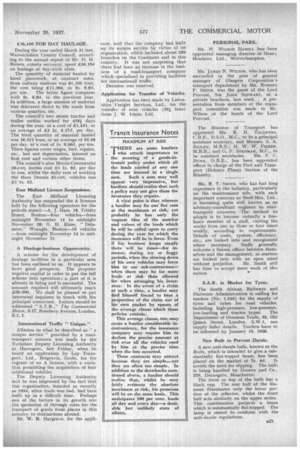Transit Insurance Notes
Page 5

If you've noticed an error in this article please click here to report it so we can fix it.
MAXIMUM AT RISK 'THERE are some hauliers 1 who attach importance to the securing of a goods-intransit policy under which all the Toads carried at any one time are insured in a single sum. Such a sum may well appear very impressive, but hauliers should realize that such a policy may not give them the insurance they require.
A vital point is that whereas a haulier may fix one flat sum as the maximum at risk, yet probably he has only the vaguest idea of the number and values of the loads which he will be called upon to carry during the year for which the insurance will be in force. Even if his business keeps steady there will be times—for instance, during icy or foggy periods, when the slowing down of his own vehicles may force him to use sub-contractorsWhen there may be far more loads at risk than allowed for when arranging his incur. ance. In the event of a claim at such a time, a haulier may find himself forced to bear a proportion of the claim out of his own pocket by reason of the average clause which these policies contain.
This average clause, too, may cause a haulier considerable inconvenience, for the insurance company may require him to declare the precise amount at risk over all the vehicles used by him at the precise time when the loss occurred.
These contracts may attract because they are simple—yet they are often too simple. In addition to the drawbacks mentioned above, a haulier should realize that, whilst he may fairly estimate the absolute maximum at risk, his premium will be en the same basis. This anticipates 100 per cent, loads all day and every day—a desirable but unlikely state of affairs.






























